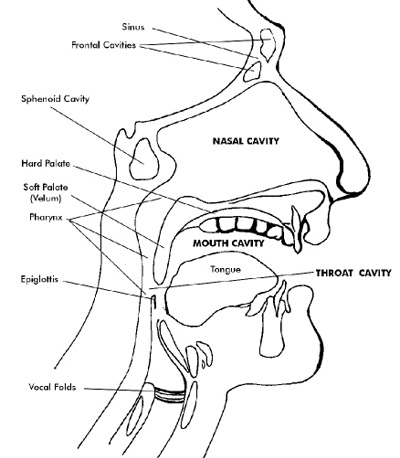vocal resonance

The main vocal resonators: throat cavity, mouth cavity, nasal cavity, and sinus cavities.
Vocal resonance is the process by which the basic product of phonation is enhanced in timbre and/or intensity by the air-filled cavities through which it passes on its way to the outside air.
Vocal resonance starts with the vocal folds (or vocal cords) which are the primary vibrators. Their vibrations set in motion, at the same frequencies or multiples of them, the air above them in various cavities of the vocal tract and sinuses. In order of decreasing importance, four regions serves as effective vocal resonators: the pharynx (throat), the oral cavity (mouth), the nasal cavity, and the sinuses.
The chest is not an effective resonator, despite the term chest voice (or chest resonance) and the fact that vibratory sensations may be experienced in the upper chest. The chest has simply the wrong design and location to play a significant role in the resonance system of the voice. The larynx, or voice box, which contains the vocal chords, is also not a significant resonator except at certain high frequencies, when it can add a bright ring to the voice.


